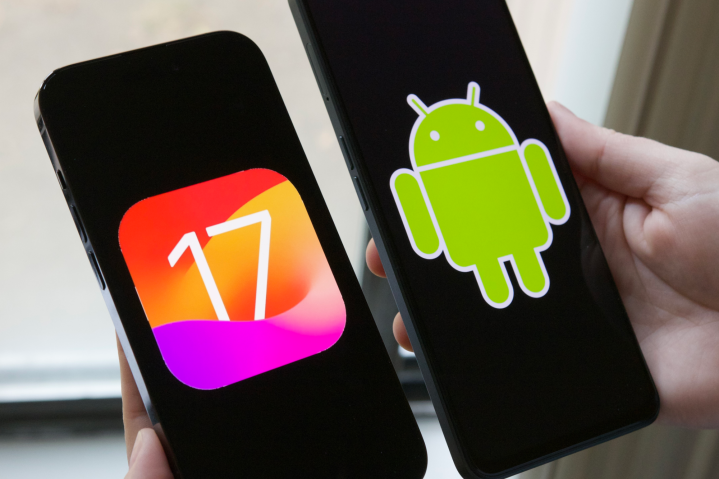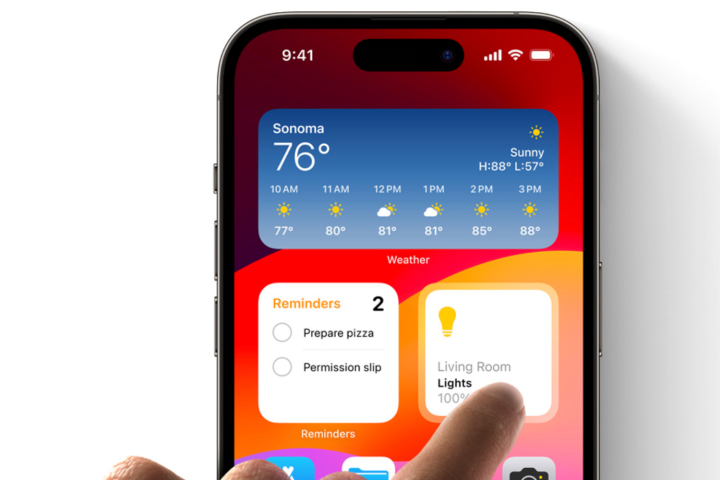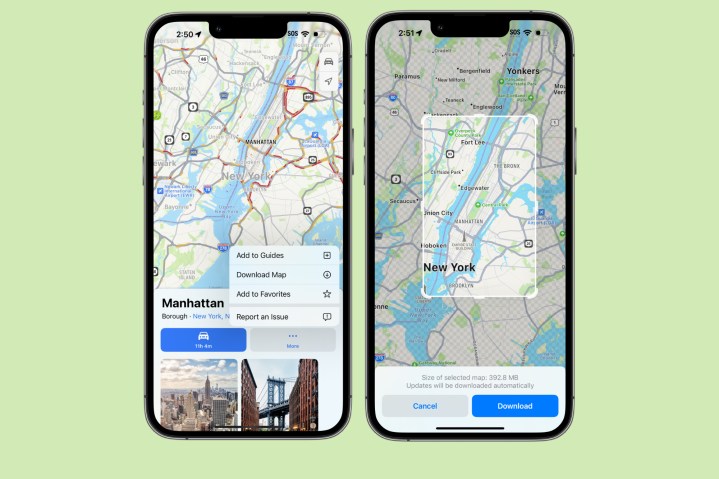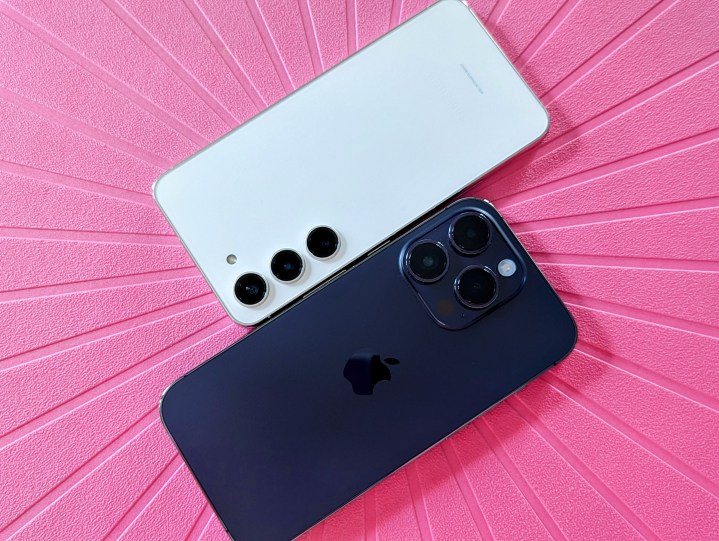
Apple made a big splash at WWDC 2023 this year, with the big headline announcement being the Vision Pro augmented reality headset. But we also got a glimpse of what’s to come with iOS 17, iPadOS 17, watchOS 10, and macOS 14 Sonoma.
Though iOS 17 appears to be more of a quiet release this year that focuses on refinement and quality-of-life improvements, I have mixed feelings overall. To be honest, I was a little underwhelmed with the iOS 17 announcement based on what was actually shown off on stage, but there are some very cool features that Apple didn’t make a big deal out of (when it should have).
But I also can’t help but notice that some iOS 17 features are ripped straight out of the Android playbook. In fact, there’s a surprisingly large number of them. Here’s are the biggest features in iOS 17 that Apple stole from Android.
Live Voicemail

Apple started the iOS 17 segment of the keynote by announcing some big changes coming to the Phone, Messages, and FaceTime apps. With the Phone app, one of those features is Live Voicemail.
What is Live Voicemail? Basically, you will see a real-time transcription of the voicemail that someone is leaving, and it also gives you the chance to either pick up the call (before they finish the message and hang up) or let them continue. Those spammers identified by carriers won’t appear as Live Voicemail, however, so that’s one less thing to worry about.
This feature is cool, but Apple is far from the first one to do it. In fact, Google did it first, though it’s called Call Screen on Pixel devices like the Google Pixel 7. With Call Screen, Google Assistant answers the call and asks the caller for more information. At this point, a live transcription shows up on the screen, and then you can decide whether or not to answer.
So yes, while it works a little differently than Apple’s Live Voicemail feature, it’s the same general idea. It’s just that Apple’s Siri probably isn’t smart enough to actually handle calls for you.
Interactive widgets

Ever since Apple added home screen widgets in iOS 14, I’ve loved the idea, and I have several widgets on my iPhone 14 Pro. But while informative, they’re still just glorified app icons since you can’t really interact with them in any way. That is changing in iOS 17.
But, of course, Apple is late to the party. Android has had interactive widgets for years at this point. In fact, Android has supported widgets from day one back in 2008, with third-party widget support arriving a year later. Then in 2011, widgets became even more flexible, allowing users to scroll and even resize them as they saw fit, and there were even interactive elements in them.
It only took Apple 14 versions of iOS to finally add widgets, and a total of 17 versions to make it possible to interact with them. We finally got there, but it sure did take a while.
Offline maps

In 2012, Apple ditched Google Maps as the default maps application on the iPhone and unveiled its own in-house solution, Apple Maps. However, in that same year, Google Maps began to offer offline map downloads, though turn-by-turn directions while offline didn’t start until 2015.
But it’s pretty incredible that over 10 years later, Apple is now finally adding offline map support in Apple Maps on iOS 17. The offline maps allow you to explore, view business information like hours/ratings, and even get turn-by-turn directions for driving, walking, and transit. It’s nice that offline turn-by-turn navigation is available from the get-go on Apple Maps, but Google Maps and Android beat it to the punch years ago.
FaceTime Voicemail

Starting in iOS 17, if you call someone via FaceTime and they don’t answer, you have the chance to leave a video message for the recipient. The other person will be able to see that a FaceTime message was left.
Google did this with Duo in 2018, and it’s still available now that the app was rebranded as Google Meet. With Google Duo/Meet, if you miss a video call, the caller can leave a 30-second video message.
Leveling feature in the Camera app

I take a lot of photos, and although it’s fun to take an unorthodox, angled photo every now and then, I usually want straight images. Though I think I can get things straight just by eyeing it, sometimes I end up being off. Apple put a leveling feature in the Camera app years ago with Grid mode, but I don’t want to use a grid every time I want to snap a photo.
Now, iOS 17 is finally adding a standalone leveler in the Camera app, though it’s off by default (unless you use Grid mode already). It appears as a broken line in the middle of the viewfinder and is white until you straighten out the image. When you’re successful and get the camera straight, it turns yellow, indicating you should snap the photo at that moment. It only shows up briefly and when you are within a narrow range of angles that are close to 0 degrees in either vertical or horizontal position.
This is a feature that you can find on some Android phones already, like the Google Pixel 7a. It shows up only when it detects that you’re trying to get a straight photo, and it shows the angle you’re holding the device at so you know how to adjust. I find it to be a useful tool when capturing images, so I’m glad to see it coming in iOS 17.
AirDrop changes

A standout feature in iOS 17 are the changes to AirDrop. You can now directly share contact information through AirDrop, with this specific feature dubbed NameDrop. It works in conjunction with the new contact posters that you can personalize with your own photo and select contact information. Once you hold your iPhone near someone else’s iPhone, you’ll automatically exchange information. Sharing other photos and files through AirDrop now works the same way, as you just need to hold the iPhones near each other. And larger files can continue to download over Wi-Fi when you step out of AirDrop’s range.
Again, this technology is cool, but Apple is definitely not the first to do it. Android had a similar feature years ago called Android Beam, where users could transfer data to one another through NFC technology. Google has replaced Beam with Nearby Share, which debuted in 2020 and uses both Bluetooth and Wi-Fi for data transfer between Android, ChromeOS, and Microsoft Windows.
It’s a two-way street, and better for all of us

These are six of the biggest features in iOS 17 that I’ve noticed are taken from Android. I’m sure that there are more to be found once we dig in further, but these are the ones that caught my eye right away.
Even though Apple has copied these Android features, I still wish it would do more. For example, iOS notifications are still awful, and I would love to be able to individually adjust volume settings for various elements independently (system, notifications/alerts, ringtone, Siri, media). Apple still has work to do on those fronts, as well as others, like more customization.
Still, at the end of the day, Apple copies Google and vice versa — and it’s better for all of us in the end.
Editors' Recommendations
- A big iPhone update is right around the corner
- Are you having iPhone alarm problems? A fix is coming soon
- This one Apple Fitness feature completely changed how I exercise
- An Apple insider just revealed how iOS 18’s AI features will work
- Here’s how Apple could change your iPhone forever




